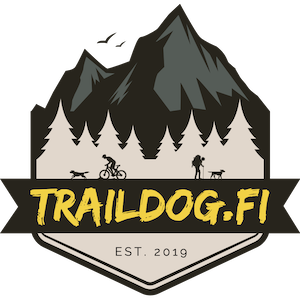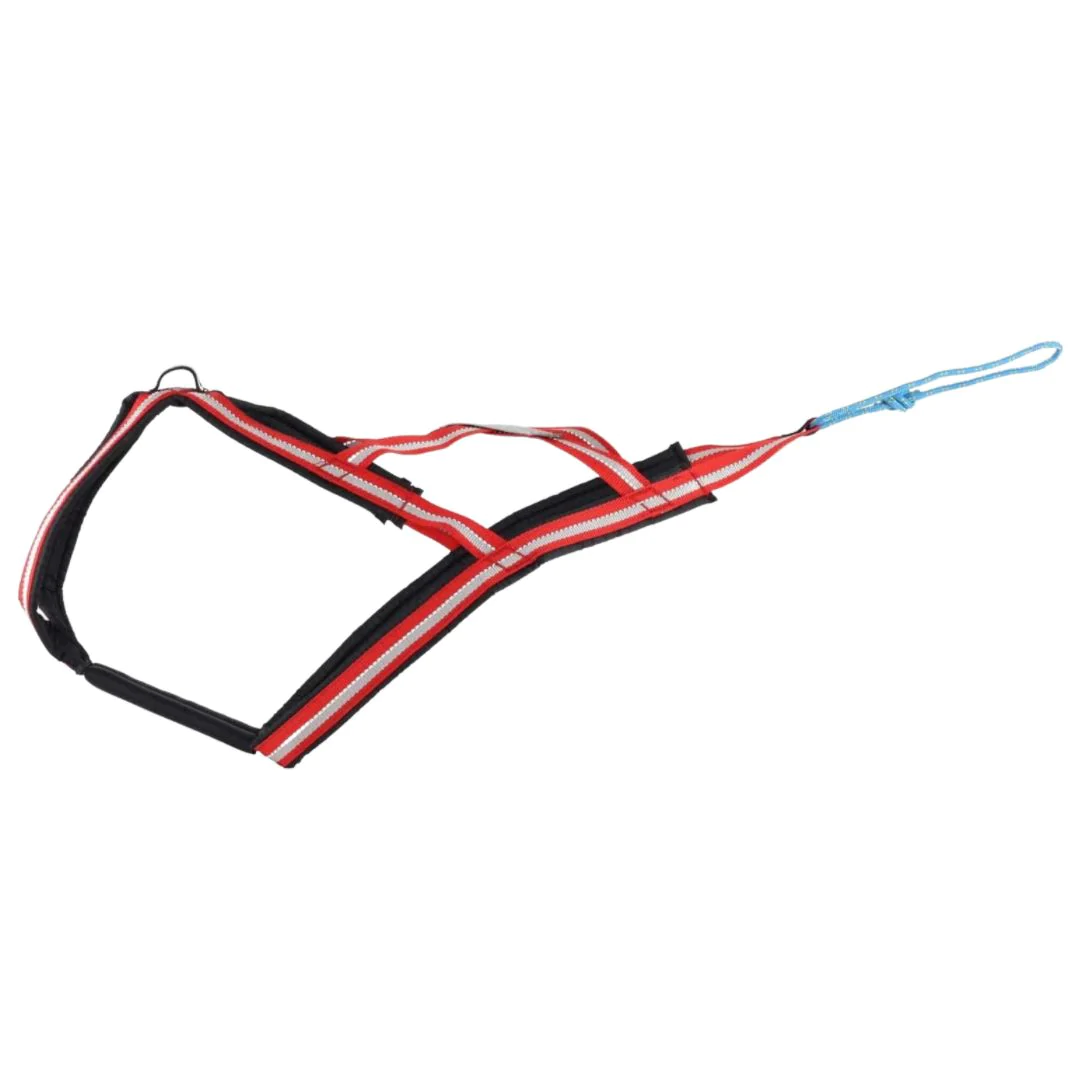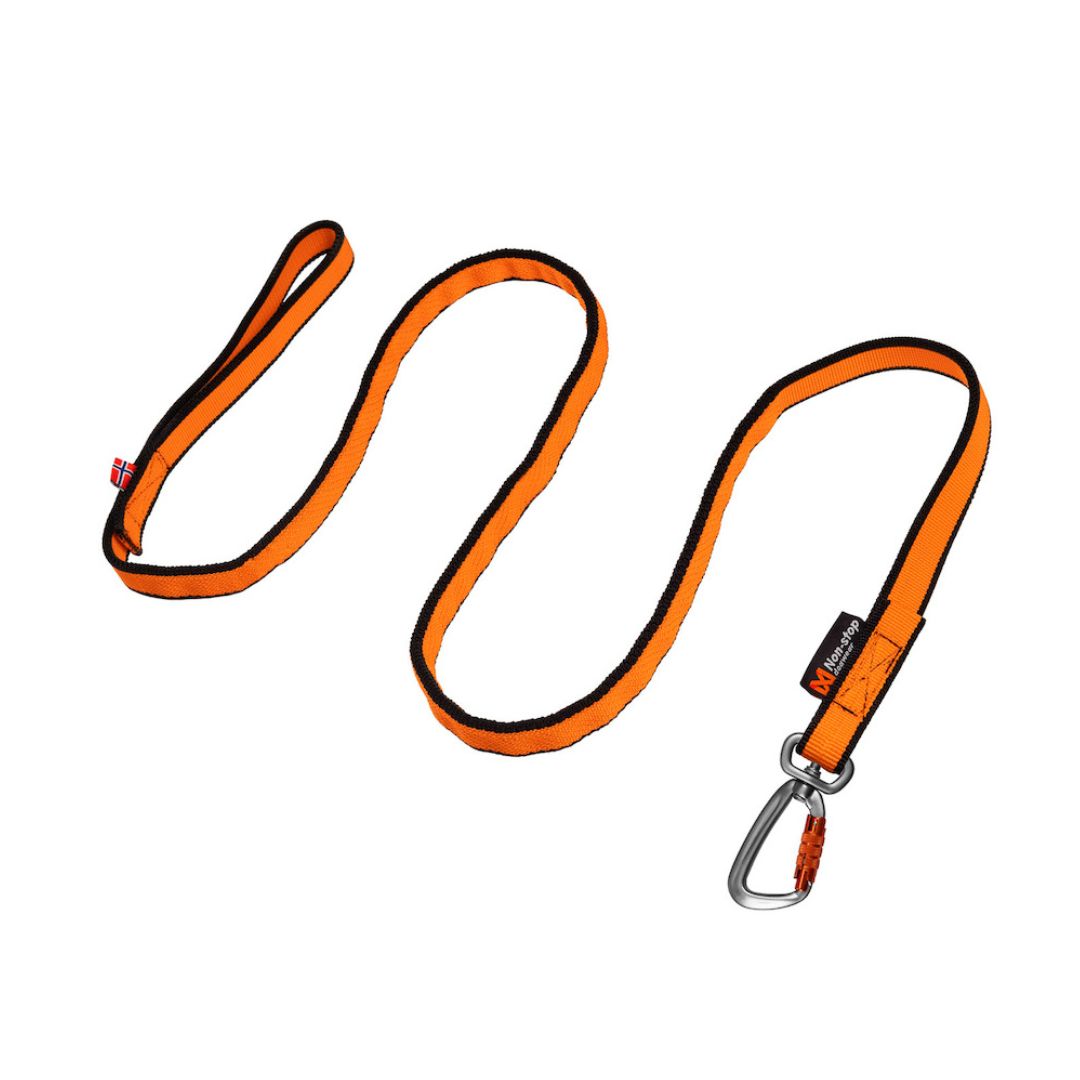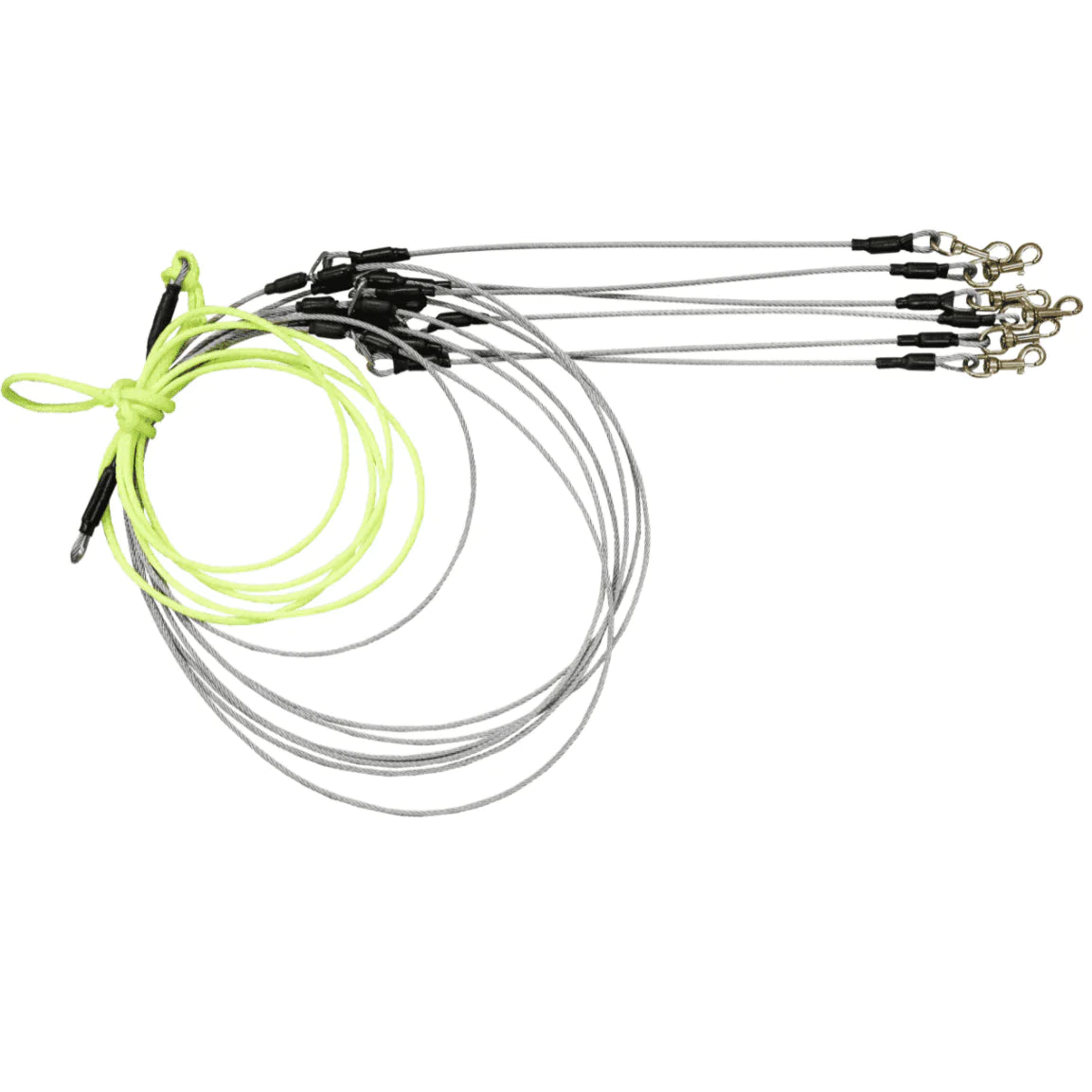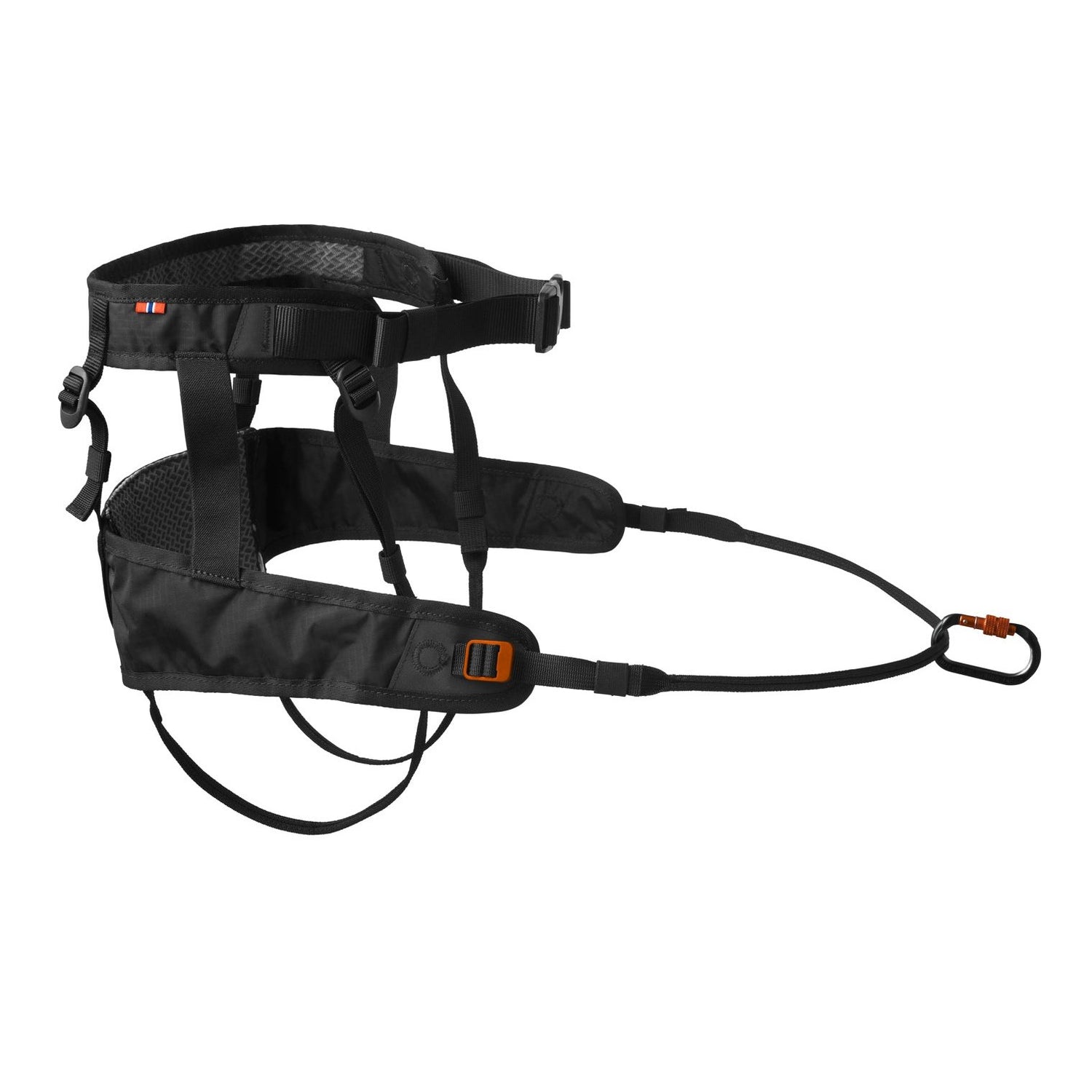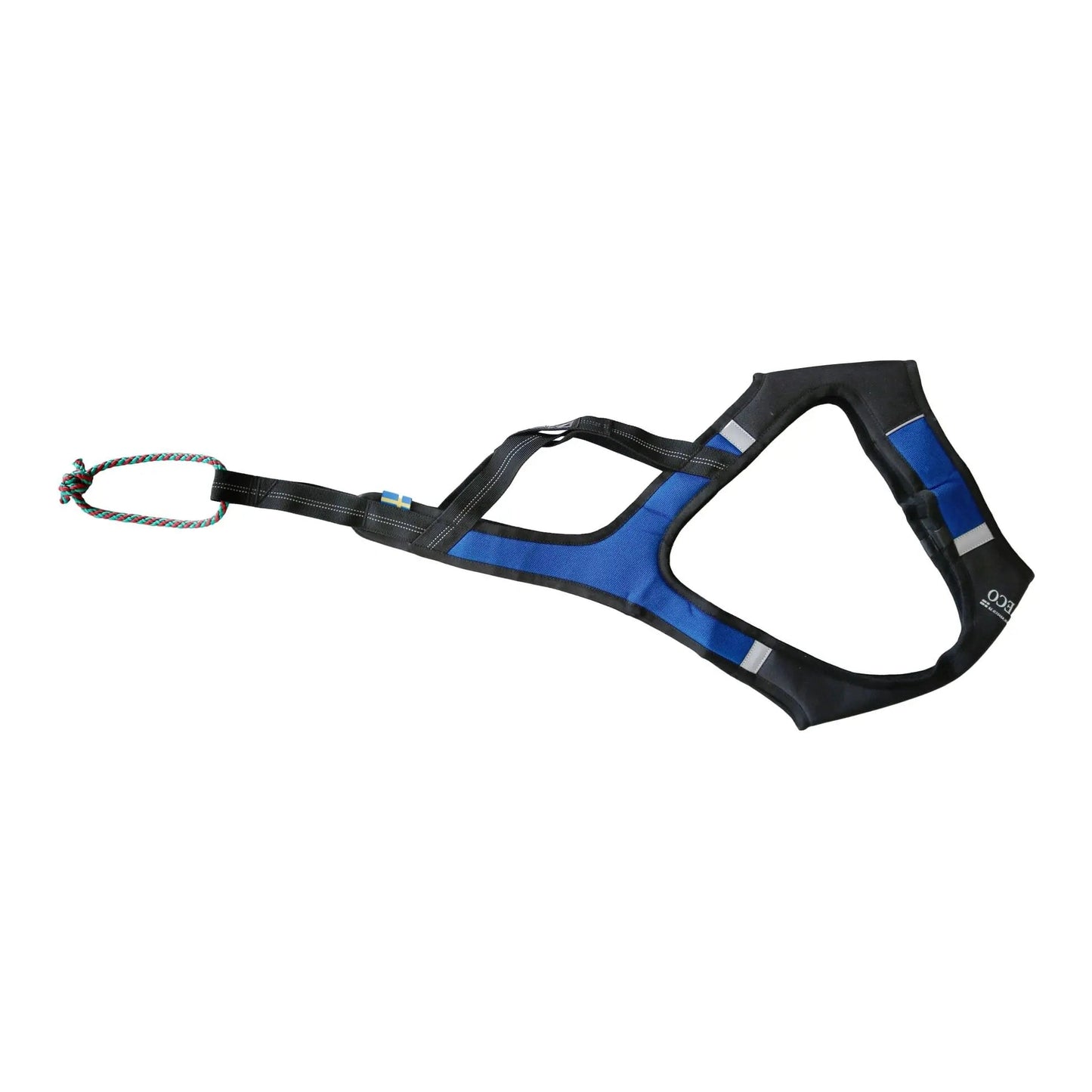
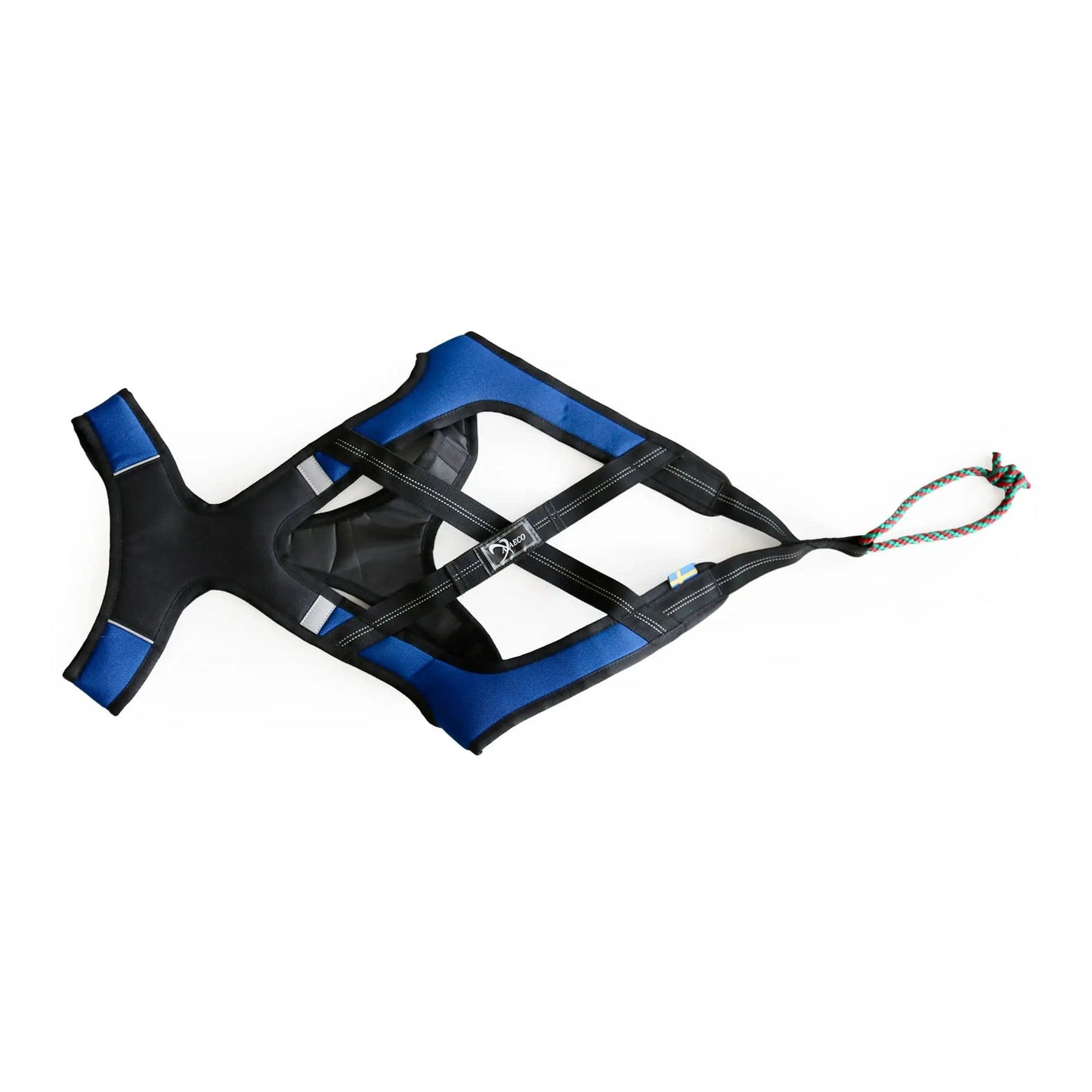
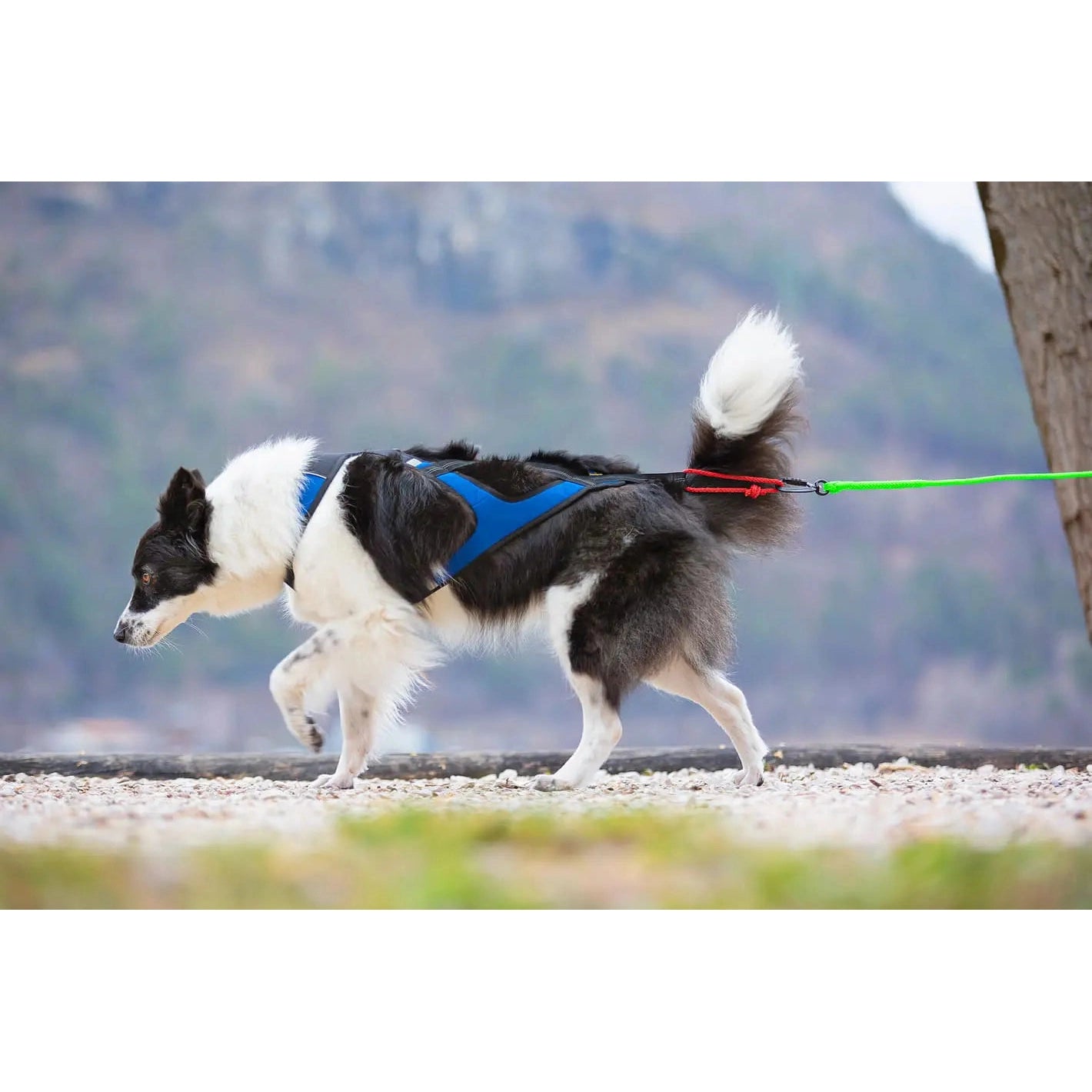
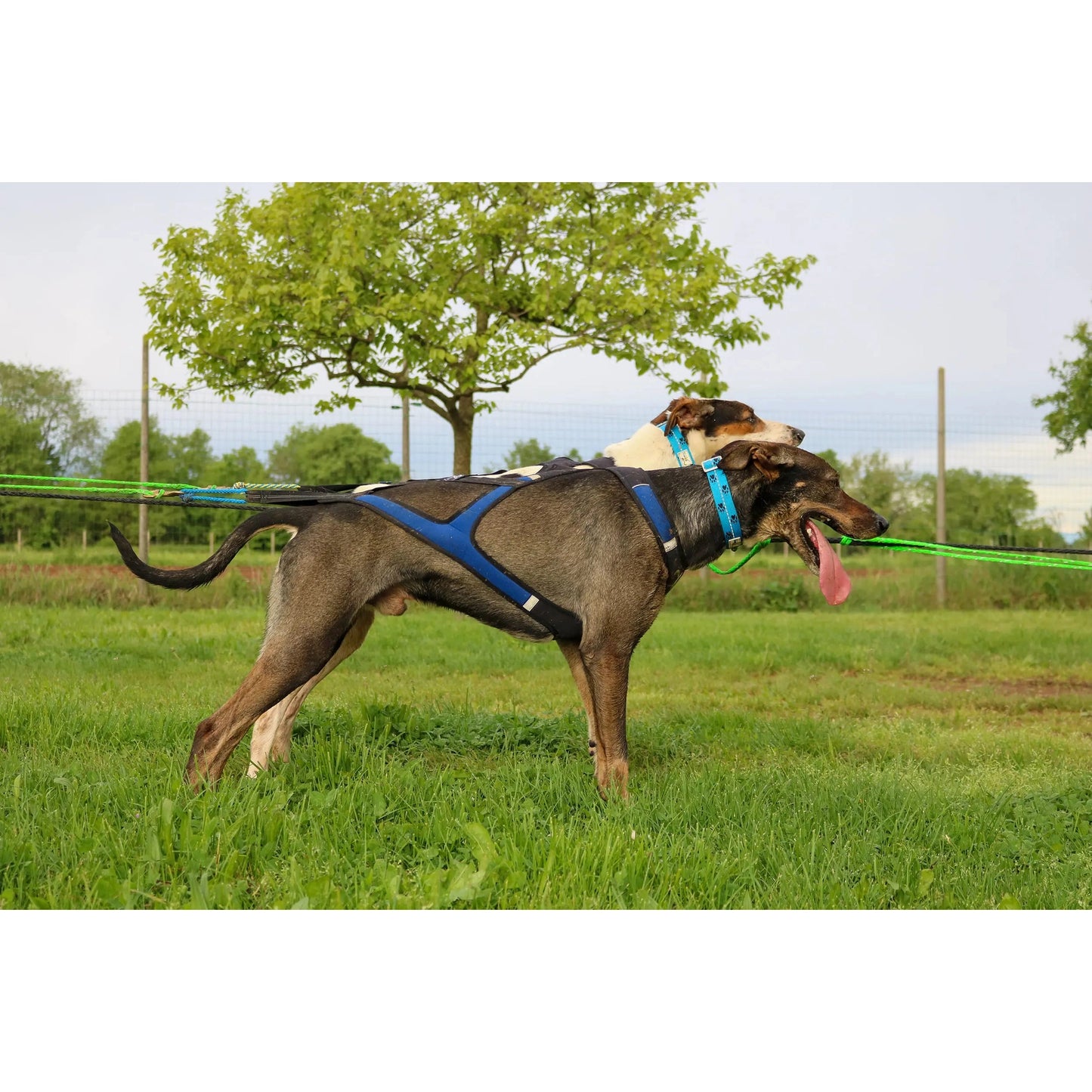
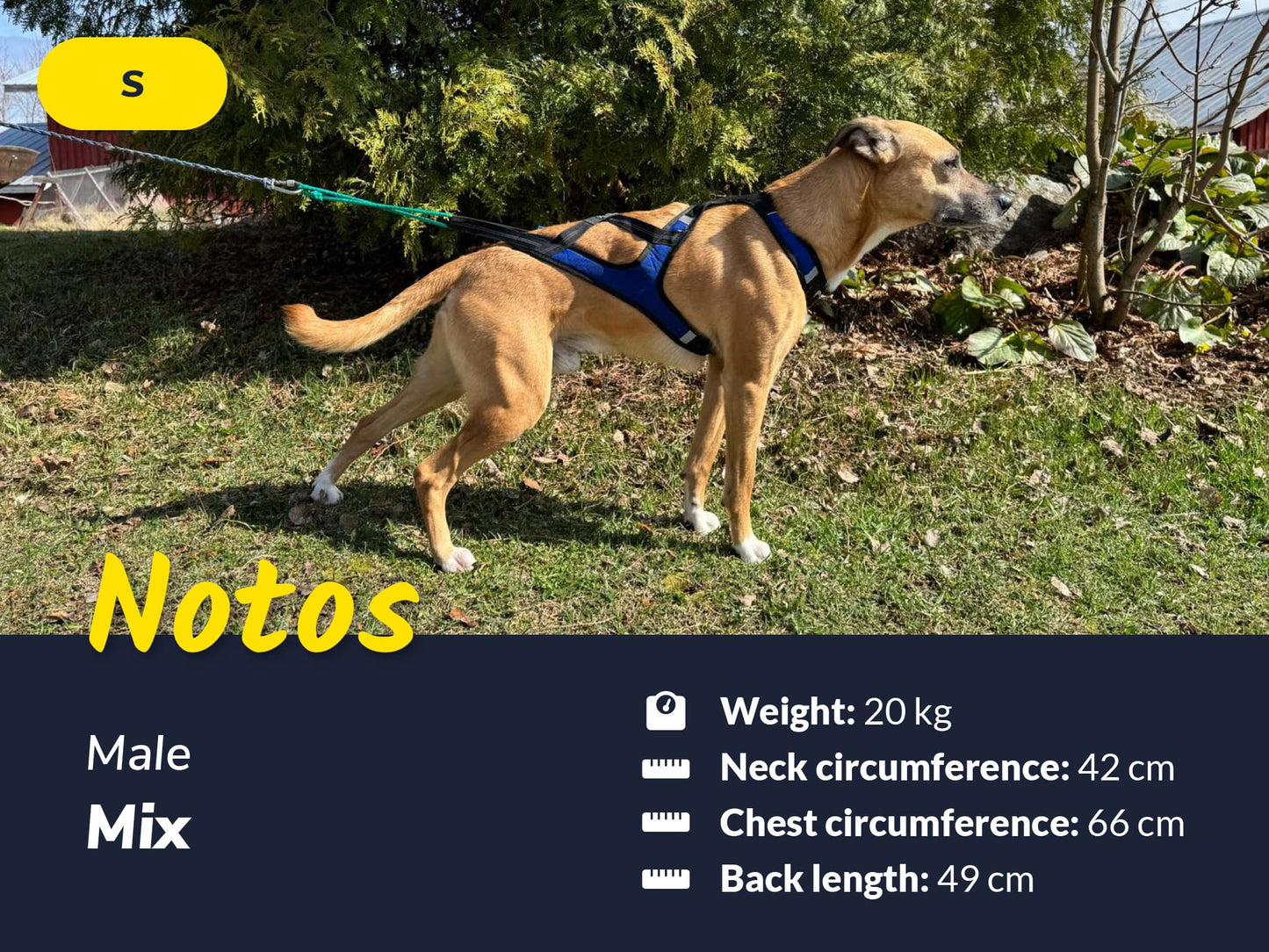
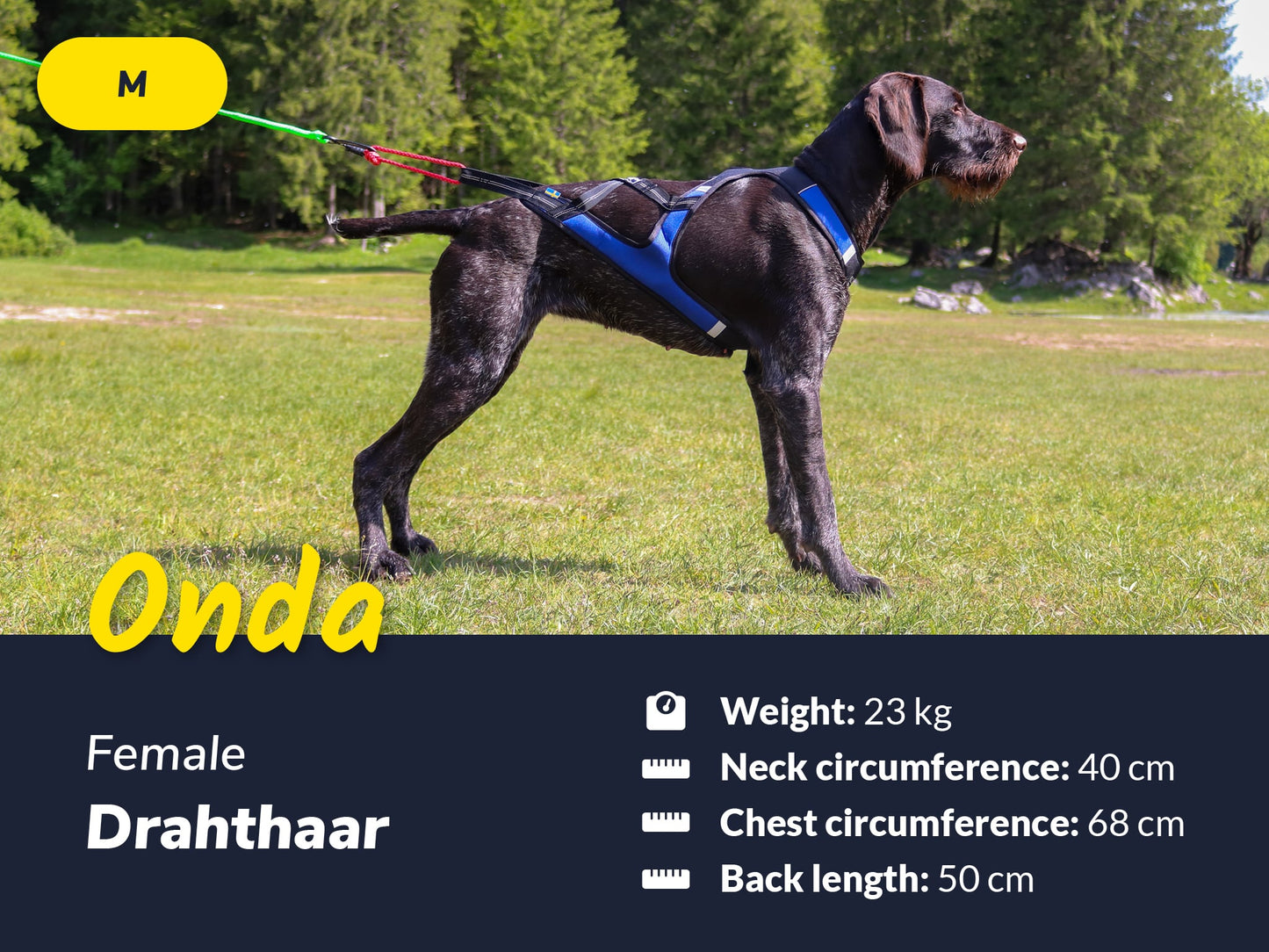
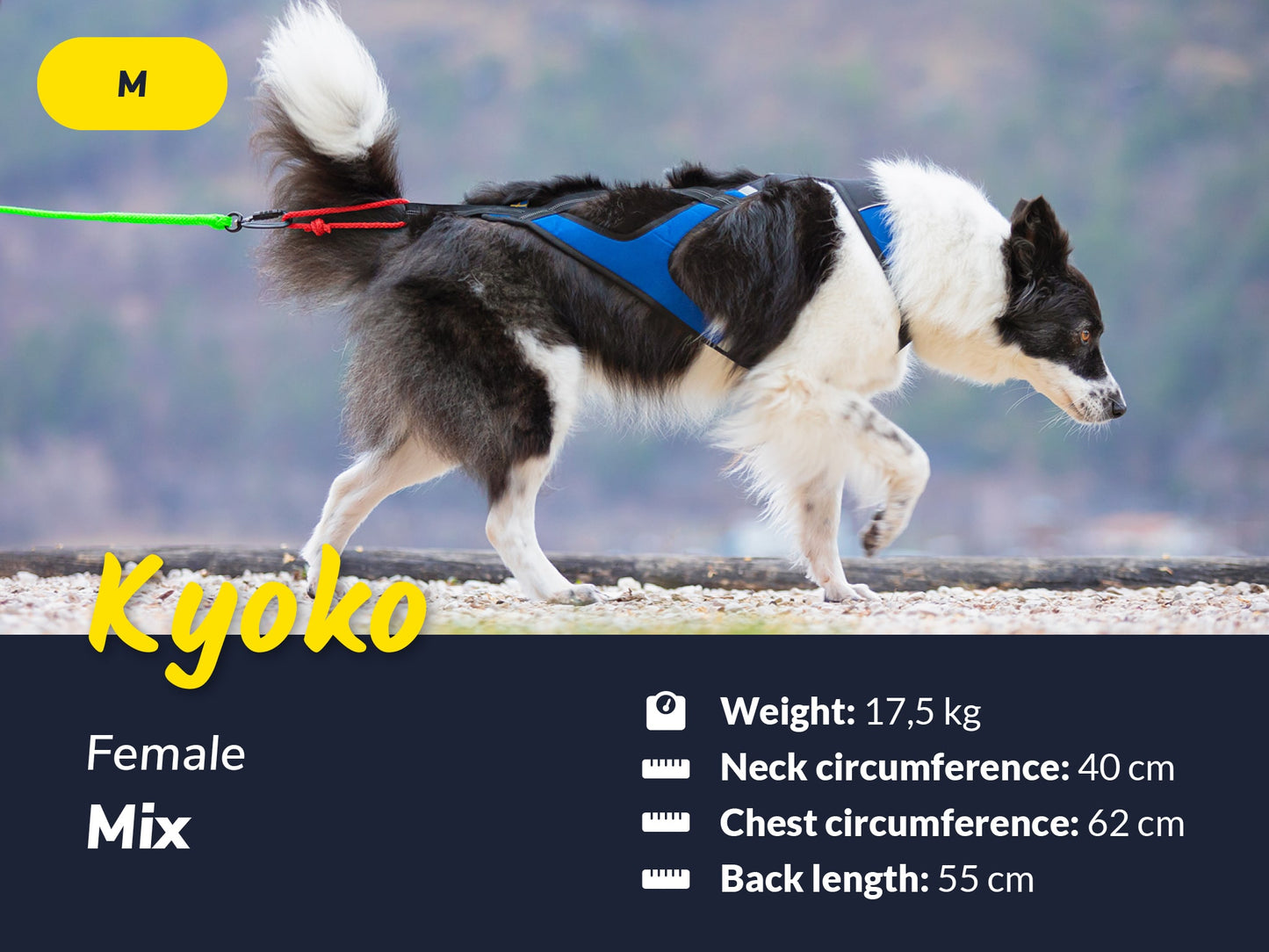
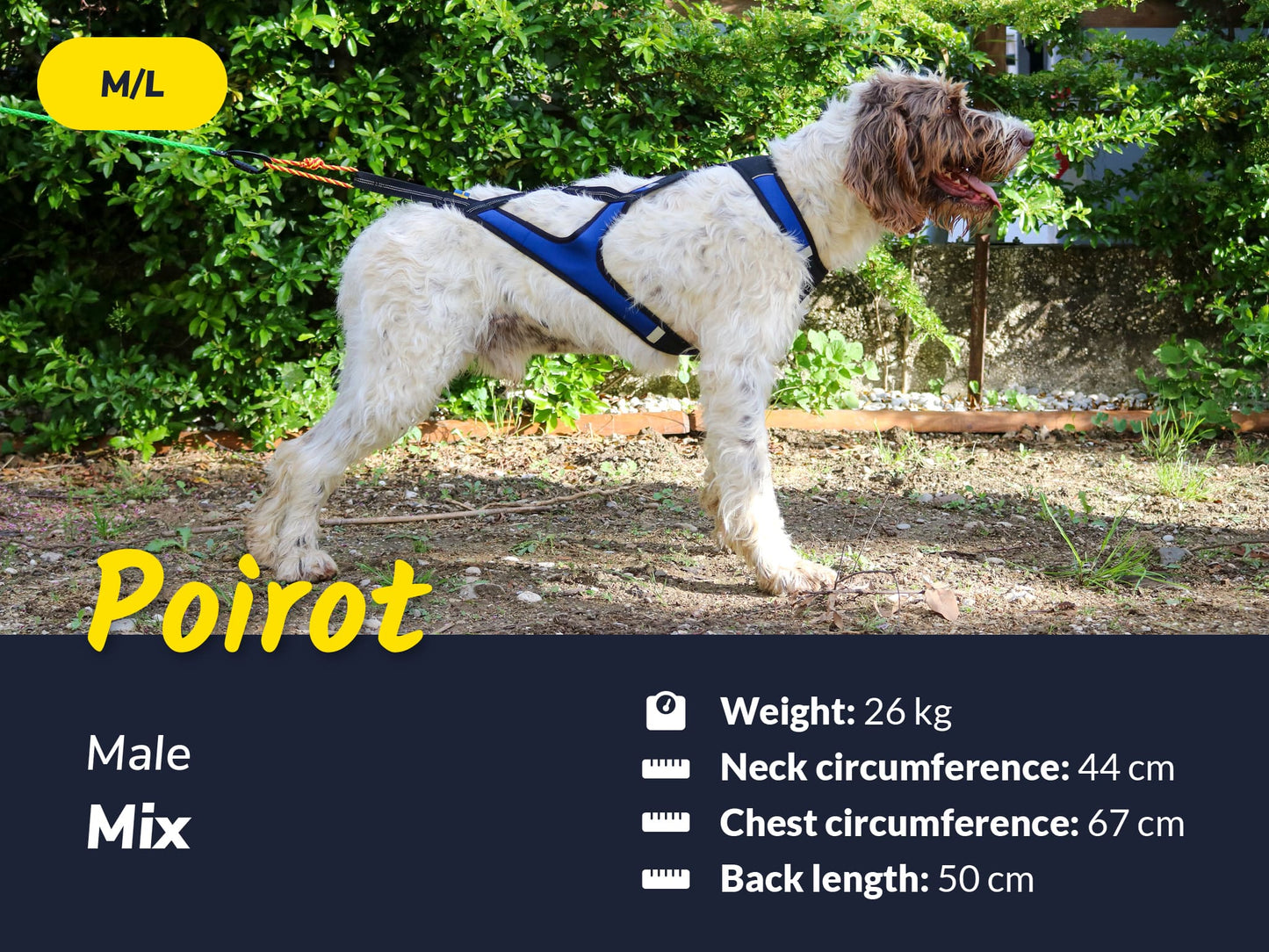
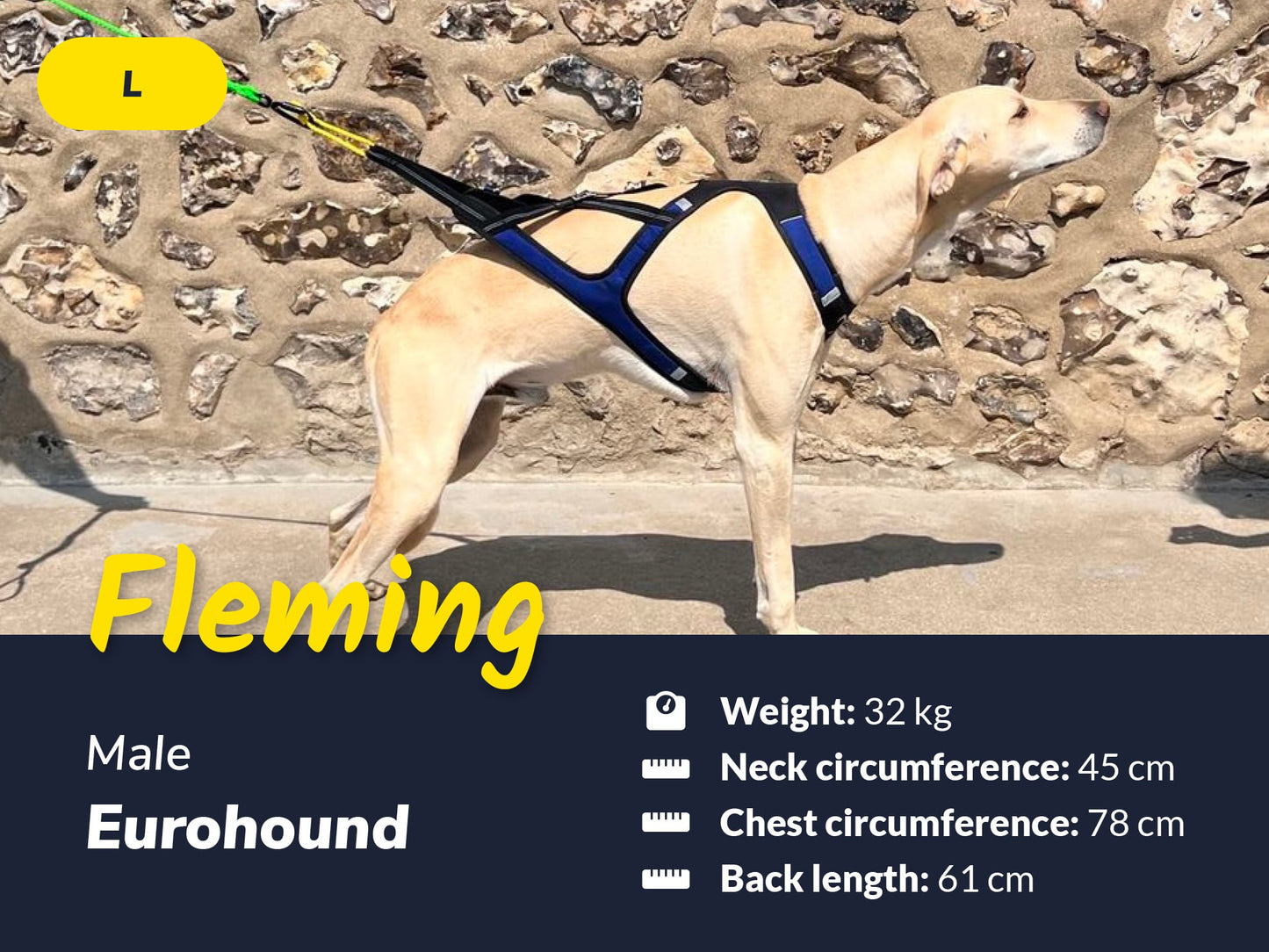
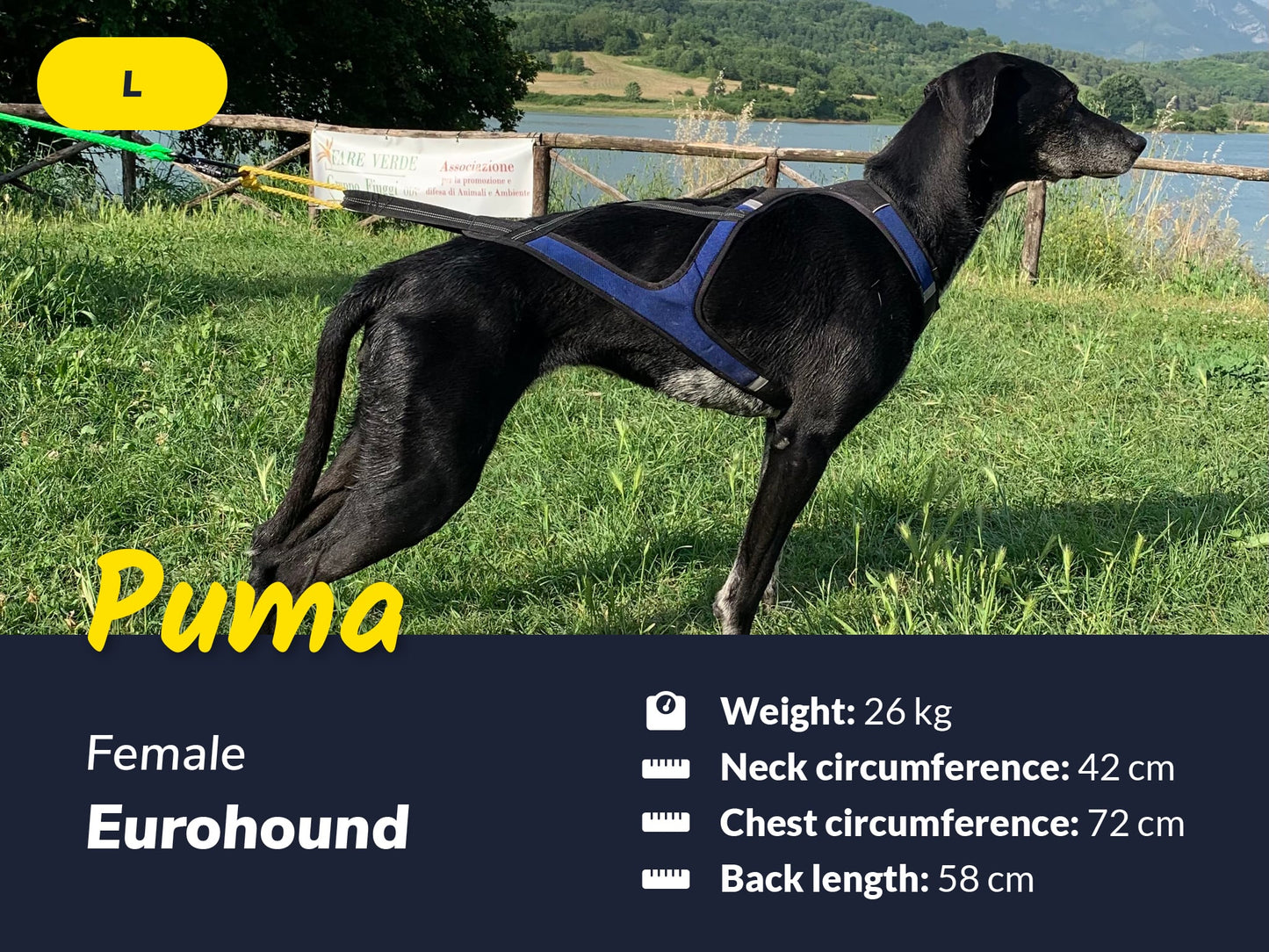
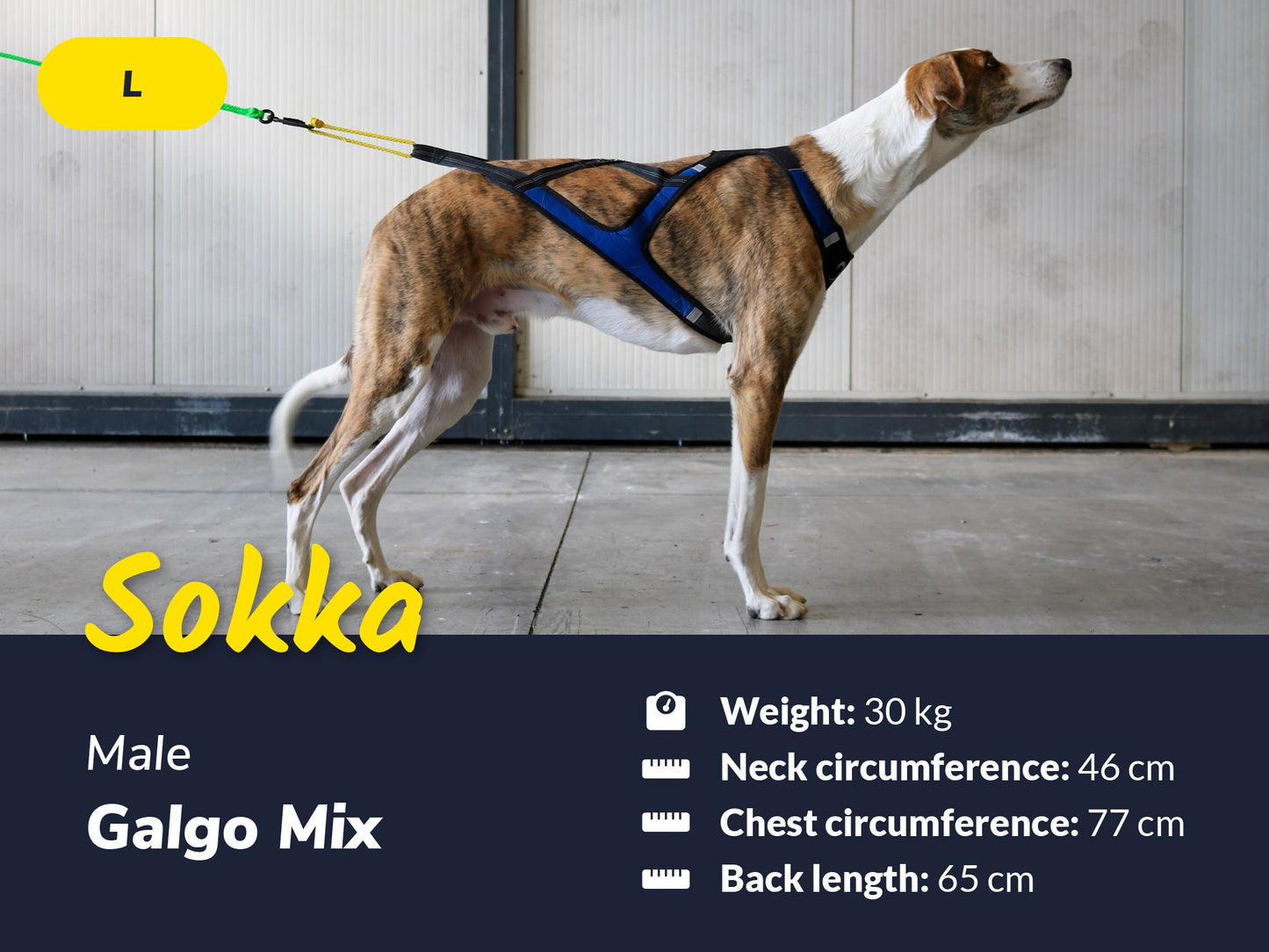
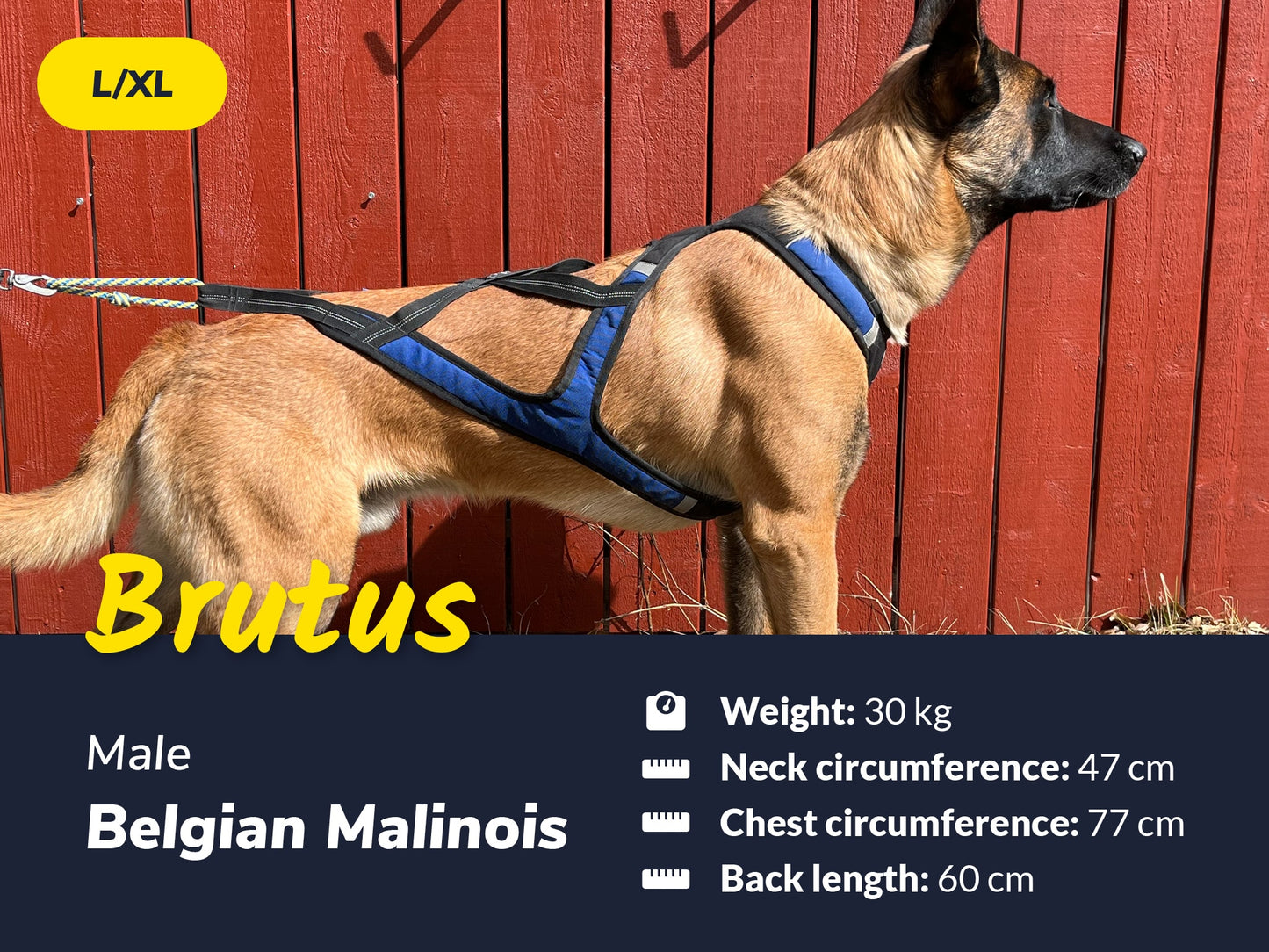



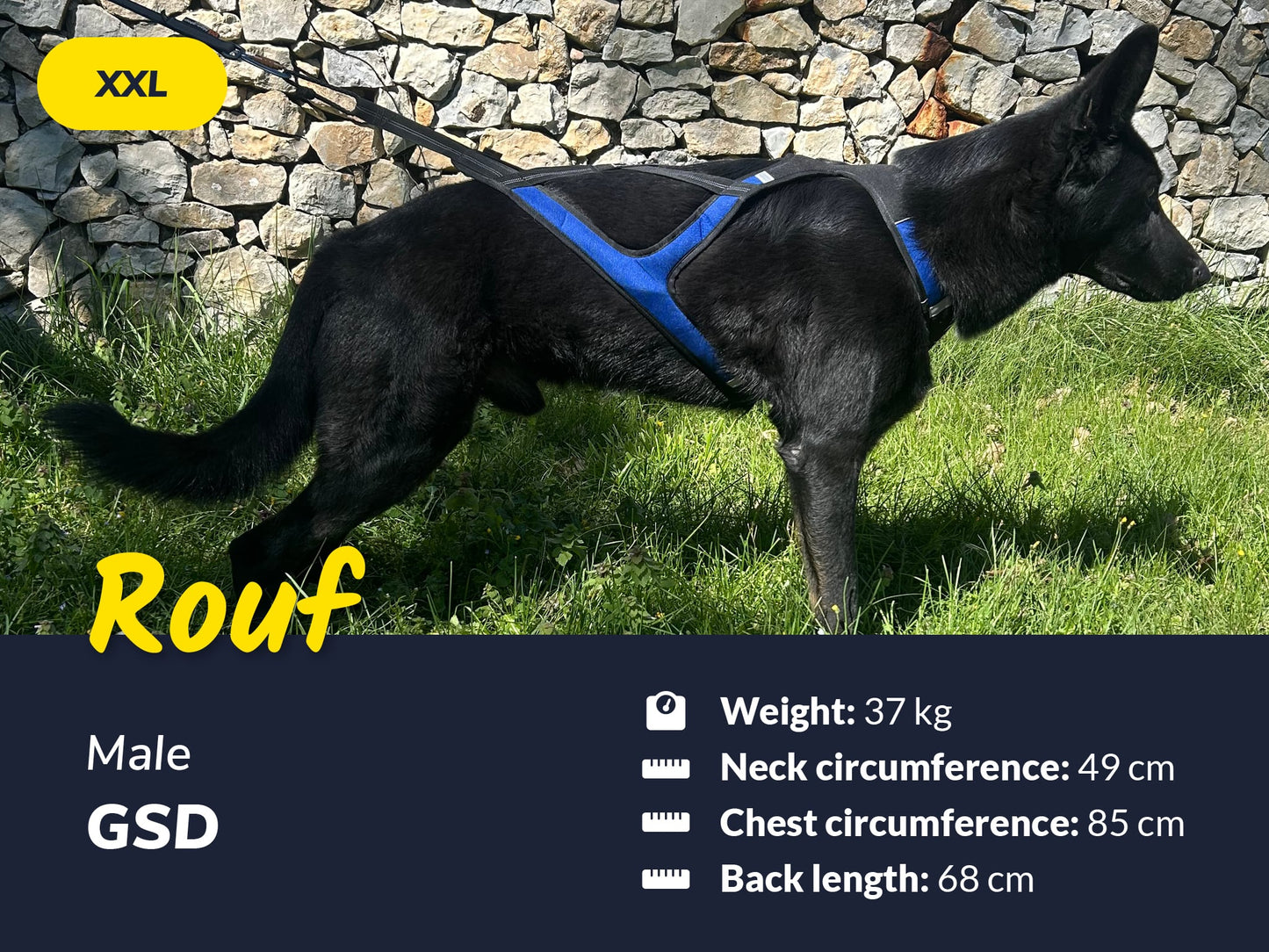
Choosing and fitting pulling harnesses
The most important sled dog sport equipment and tool for the dog is properly fitting, ergonomic pulling harness. Investing in well-fitting harnesses is essential, as they directly affect the dog's well-being, health, and the enjoyment of the pulling sport.
Finding suitable pulling harnesses can be relatively easy - or quite challenging depending on the dog's body structure. Dogs are always individuals and the structure can vary greatly even among the same breed. Because dogs come in many shapes, there are also many pulling harness models available - from many different brands. All the harnesses in our selection are high quality. The "best pulling harness" is therefore one that fits and suits that particular dog.
Below are instructions to help you pay attention to the right things when considering harness models and fitting harnesses.
Pulling harness, Y-harness, T-harness - how do different dog harness models differ from each other?
-
T-harnesses
Dog harnesses have traditionally been so-called T-harnesses, where a horizontal strap runs across the dog's chest. This type of harness restricts the normal forward movement of the legs, so they are generally not recommended for everyday use, let alone for pulling, based on current knowledge.
-
Y-harnesses
A Y-harness refers to a harness whose chest part splits between the dog's legs in the shape of the letter Y. A well-fitting Y-harness allows the dog's legs to move naturally and freely both when walking and running. A short (ending at the mid-back) Y-shaped harness is excellent for everyday use, walking, and hiking. However, for actual pulling sports, pulling harnesses should be acquired, because if the dog pulls strongly in normal Y-harnesses, the pull causes the harness's neck opening to rise up to the throat regardless of how well the harness fits otherwise.
-
Pulling harness
Pulling harnesses are also structurally Y-shaped from the front. However, the side parts of the harness and the attachment point of the Pull line differ from the normal short Y-harnesses intended for everyday use. In pulling harnesses, the strap is attached to the attachment loop on the dog's rump. The pull comes through the rear-angled side pieces to the chest part of the harness. The pull thus pulls the lower edge of the harness's neck opening down, away from the dog's throat. Therefore, the pulling pressure does not press on the dog's throat, unlike what easily happens, for example, when the dog pulls in normal everyday harnesses.In pulling harnesses, the pulling pressure is distributed to the dog's chest through the rear-angled side pieces, and thus does not press on the dog's throat.
When to get a pulling harness for the dog?
If the intention is to teach/allow the dog to pull, it is recommended to acquire pulling harnesses right at the beginning of pull training. Primarily for ergonomic reasons, but also so the dog learns to associate allowed pulling with the pulling harness, and normal everyday harnesses can be kept as harnesses where pulling is not allowed.
A buyer of pulling harnesses should be prepared to possibly buy several harnesses during the dog's pulling career, as pulling harnesses must always fit well and cannot be bought with a large growth margin for a young dog. Especially in larger breeds, clear muscular development usually occurs until 2-3 years of age, and in thick-coated dogs, the amount of fur can vary seasonally, affecting the fit of the harness.
Pulling harnesses are fitted while pulling
Fitting pulling harnesses can sometimes be time-consuming. It is advisable to reward the dog at first, for example, for slipping its head into the harness, so the dog associates putting it on with something pleasant. Once the harness is on, the fit of the pulling harness should be checked while there is tension on the harness. Pulling harnesses are therefore easiest to fit with an assistant.

When fitting, it is important that the dog is on a non-slip surface, preferably outside or alternatively indoors on a rug (not, for example, on a laminate floor). If the surface is even slightly slippery, the dog will not stand in a natural position and will lean on the harness.
Once a seemingly suitable pulling harness is found, its final suitability for that particular dog is seen in actual pulling use.
In the image below, you can see how a properly sized pulling harness should fit when the dog is pulling. Below you will also find detailed instructions for a closer examination of each point.

When fitting pulling harnesses, check these points
Neck opening
Fitting starts by checking the suitability of the neck opening. The pulling harness's neck opening should be significantly tighter than what you are probably used to seeing in normal everyday harnesses. So don't give up immediately if the dog's head doesn't slip completely easily through the neck opening (note: if you turn the neck opening sideways, in the direction of the dog's ears, putting it on is easier). Once you have the harness on the dog, carefully lift/move the dog's fur and "extra skin" away from under the harness's neck opening.
- At this stage (still without pulling), try how many fingertips fit easily between the dog's neck and the harness. If more than two fingers slip in easily, it indicates that the neck opening is probably too large. If the pulling harness's neck opening is too big, it will slip down onto the dog's shoulders and shoulder blades during a strong pull. This disrupts the normal movement of the front legs and can lead to joint strain injuries. As a rule of thumb, without pulling, two fingertips should fit between the dog's neck and the suitable pulling harness's neck opening – only one for small dogs.

There is just enough room for two fingertips between the neck and neck opening when there is no pull in the harness. The neck opening is neither too big nor too small.
- If the harness has adjustable side straps, like Non-stop dogwear Freemotion, tighten them appropriately, as this also affects how the harness (and neck opening) fits the dog when pulling. You can find detailed instructions for adjusting the Freemotion harness model at this link.
- Next, pull the harness strongly backward from the Pull line attachment loop and feel with your index finger perpendicularly from the lower edge of the harness neck opening, do you feel the upper edge of the dog's breastbone tip? See the picture below. At this stage, the pull in the harness should be as strong as when the dog is working in the harness.
- A neck opening that is too small or the wrong shape remains too high despite the pull, i.e., above the upper edge of the breastbone, causing the harness to press on the dog's throat/trachea. In this case, you no longer feel the upper edge of the dog's breastbone tip from the lower edge of the harness neck opening even with a strong pull.

The pull pulls the lower edge of the neck opening away from the dog's throat, and the upper edge of the breastbone tip feels like the lower edge of the neck opening when palpated perpendicularly. The neck opening is therefore suitable for the dog.
Chest piece
Check from the front of the dog that the chest piece is not too wide for your dog. A chest piece that is too wide can restrict the free movement of the legs forward and start to chafe the armpits.
Next, check the length of the chest piece:
- If the chest piece is too short, the harness ends prematurely and the side straps hit the dog's armpits behind the front legs. Note here as well that the harness fits correctly only when pulling. Pulling harnesses that are just the right size for the dog may ride up behind the armpits and look very ill-fitting when "loose" on the dog.
- If the chest piece is too long for your dog, the side pieces of the harness will extend too far behind the dog's chest and ribs. The lower parts of the side pieces must stay on the dog's chest / ribs even when pulling. Otherwise, they press on the sensitive belly area during pulling.
- The right size harness leaves a little empty space behind the armpits when pulling, but the lower sides still stay on the dog's ribs.
Alla esimerkkikuva, jossa valjaassa on on koiralle liian pitkä rinta-osa. Valjaan kylkiremmien alaosa pääsee koiran rintakehän ja kylkiluiden taakse ja painautuu vedossa ikävästi vatsaan.  Rintaosastaan kyseiselle koiralle liian pitkä vetovaljas.
Rintaosastaan kyseiselle koiralle liian pitkä vetovaljas.
Back length
In full-length pulling harnesses, the attachment loop for the Pull line should start roughly where the dog’s tail begins. A too-long harness can slip behind the dog’s rear. Usually, it doesn’t matter much if the harness is a bit shorter, as long as the chest piece is long enough so the side straps don’t catch in the armpits when pulling. Especially if you do sports where the Pull line comes off the dog at a slight upward angle (e.g., running/skiing/biking), the harness can be a few centimeters shorter than the back length.
For sled dogs (i.e., pulling from a low point), full length is more essential. If the dog mainly pulls in low pull point sports (sled, tire, etc., and wheel dogs in a team), the so-called bar harness is the most ergonomic pulling harness model.
Example of properly fitting Non-stop Freemotion pulling harnesses

In the picture above, the dog is wearing Non-stop Freemotion harnesses with a light pull. The neck opening is snug enough and not on the shoulders. The lower parts of the side straps do not rub behind the armpits but still stay on the ribs when pulling.
Measuring your dog for pulling harnesses
With the information in the picture below, you can start exploring options from our pulling harness selection.
- A good, snug fit of the pulling harness neck opening is important, so choosing the model and size always starts from that. When measuring, keep the tape measure as tight as possible so it runs in a straight line in front of the dog's shoulders and shoulder blades – just as the pulling harness neck opening should be positioned when pulling. Always take the measurement from only one side of the dog to get an accurate size. You will find a size chart on each pulling harness product page showing the measured neck opening size. Divide the neck opening measurement by two and try with a tape measure piece to see if that length fits your dog.
- Most size charts provide a reference dog weight, back length, and/or example breed. Check if your dog roughly fits these reference measurements.
- If you're unsure, ask! Based on the information below, we can help with the selection.

Typical pulling harness options
Small or somewhat small dogs (about 3–20 kg):
Dogs with a short or rather short chest (e.g. spitz, samoyeds):
- Non-stop Freemotion
- Axaeco Scandinavia
- Inlandsis Open-Back (5-20 kg dogs)
Dogs with a slender neck and long chest (e.g. slender working line husky and border collie, malinois, eurohound):
Dogs with a sturdy neck (e.g. large shepherds, retrievers, malamutes):
Dogs whose required harness neck opening measurement is almost as large or larger than the back length:
- Well-fitting pulling harnesses are practically only available made to measure.
Help with choosing a pulling harness or determining fit
We are happy to help with choosing and fitting pulling harnesses and other products. This works best with measurements taken from the dog and fitting pictures.
If you send us fitting pictures of the pulling harness, please take them preferably with an assistant as follows, mimicking natural pull:
- the dog is on a flat surface where its paws do not slip (preferably outside, never on bare wooden floor)
- the dog stands sideways facing the camera
- the harness provides a proper strong pull without the dog arching its back. The pull should be close to the actual strength with which the dog pulls the runner/skier/bike/sled.
- check that the pull comes from the same angle as naturally with the Pull line (usually a bit from above for a small dog, straight from back height for a big dog)
You can send the pictures to us by email or by Whatsapp message.

